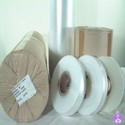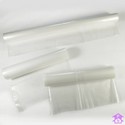Please choose a vault from below or make a deposit...
n. Film - a thin sheet of (usually plastic and usually transparent) material used to wrap or cover things

 shopping > packaging > plastic film > layflat tubing
shopping > packaging > plastic film > layflat tubing
 Shopping > Packaging
Shopping > Packaging
 shopping > packaging > plastic film
shopping > packaging > plastic film
 shopping > packaging > plastic film
shopping > packaging > plastic film
 shopping > packaging > plastic film
shopping > packaging > plastic film
 shopping > packaging > plastic film
shopping > packaging > plastic film
 shopping > packaging > plastic film
shopping > packaging > plastic film
 shopping > packaging > plastic film
shopping > packaging > plastic film
 shopping > packaging > plastic film
shopping > packaging > plastic film
 shopping > packaging > plastic film
shopping > packaging > plastic filmOften when people talk about plastic films�which technically are defined as plastic sold in thicknesses of up to 10 mils�they treat them as one type of material, grouping all flexible plastic packaging into a single vault. What they do not realise is that plastic films compose a broad vault of materials that can be relatively simple or complex depending on the demands of a particular product or package. Like plastic bottles and containers, film can be made with different resins, each of which has a unique combination of properties that makes it ideal for certain applications. For example, low density polyethylene (LDPE) film acts as a gas barrier, which is necessary for packaging such things as chicken, which would quickly spoil if exposed to oxygen. Polyvinyl chloride(PVC) film, on the other hand, is gas permeable and necessary for packaging such things as red meat, which require a small amount of oxygen inside the package in order to remain fresh. Plastic film also can be clear or coloured, printed or plain, single- or multilayered and combined with other materials such as aluminum and paper. Thus, the only thing that all plastic film really has in common is that it is flexible in nature, as used in grocery bags, as opposed to
Another reason why it is somewhat difficult to get a grasp on plastic film is because it is used in such a wide range of products and packages. Typically, its usage is divided into two general vaults�packaging and nonpackaging�that can also be broken down into smaller components. For example, there are three types of packaging applications in which film is used: food, nonfood and other. It is important to keep in mind that within each of these vaults, plastic film can vary by resin and colour; it also may be made of one layer of plastic or as many as ten layers depending on the complexity of the package. In addition, other materials�such as aluminum or paper�may be used in combination with plastic film in order to impart special properties. Therefore, even the following vaults of film are themselves made up of many diverse types of film.
Food packaging film is used in such things as in-store bags for produce (such as apples and potatoes); all nonfrozen baked goods (such as rolls and breads); bakery bread and bun bags; tray covers for institutional deliveries of bakery products; bags-in-a-box (film used to contain fluid in a supportive box, such as boxed wine); boil-in-bags (film used to contain food prepared by keeping it in the package and placing it in boiling water); candy and confection bags and wrappers; carton liners (for such products as cake mixes); and meat, poultry and seafood wraps (such as hot dog and bacon film). It is worth pointing out that LDPE is the polyethylene resin used most often in food packaging; it accounts for 65.5 percent of the total, with LLDPE making up 25.6 percent and HDPE making up 8.9 percent.
Non-food packaging film refers to such things as industrial liners (film used to line supported structures such as gaylord boxes (yes such a thing really exists), frozen pork box liners and liners for shipments of nuts and bolts), shipping sacks (film used to protect and/or contain contents such as bark and mulch bags), bubble packing, envelopes, multiwall sack liners, overwrap, and rack and counter bags. Again, data on film used in nonfood packaging applications are confined to the polyethylene family. LDPE is the polyethylene resin used most frequently in nonfood packaging applications. It composes 54.9 percent of the polyethylene used in nonfood packaging, whereas LLDPE composes 35.5 percent and HDPE composes 9.6 percent.
The other types of packaging in which film is found are stretch and shrink wrap. Stretch wrap is a strong, highly flexible film that can be stretched to take the shape of a product or products. It is used in a variety of applications ranging from overwrapping fresh meats to securing shipping cartons to pallets. Stretch wrap usually is made of co-extruded LLDPE and LDPE, although it can be made from individual plastic resins, such as LLDPE, LDPE and PVC. Shrink wrap, on the other hand, is a plastic film that is applied loosely around products, sealed by heating the seams and shrunk through a heating process to take the shape of the products. In shipping, it can be used to bind multiple packages of less than pallet size together (such as five 20-ounce cans of beans or three juice boxes) or used over an entire pallet of packages. In these applications, shrink wrap typically is made of LDPE, although it can be made from other resins as well, such as LLDPE and PP. In addition to shipping applications, shrink wrap also can be used for bundling purposes, such as bundling magazines and papers, and it can be used to protect and display such products as albums and compact disks. There are several ways to tell stretch wrap and shrink wrap apart: stretch wrap usually feels somewhat tacky to the touch and is very flexible, whereas shrink wrap may be more brittle (or crinkly) to the touch and does not stretch when pulled. In addition, stretch wrap usually is wrapped around products, whereas shrink wrap will enclose the product (that is, have a top and bottom cover), which makes it an attractive choice for shipping products in extreme weather conditions or for products that need extra protection. Data compiled by Modern Plastics show that a total of 1,074 million pounds of polyethylene film were used in �other� packaging applications in 1995. (Again, data are not available for nonpolyethylene resins or for HDPE.) As Exhibit 4 shows, LLDPE is used most often in stretch wrap applications (at 802 million pounds) and LDPE is used most often in shrink wrap applications (at 192 million pounds).
Of course, a great deal of film also is found in a vault the industry refers to as nonpackaging Like bottles and containers, plastic film can be made with a variety of plastic resins. Following is an explanation of some of the different resins with which film is made, a description of their properties and some of the applications in which they are commonly used.
These two polyethylene resins often are talked about as if they are one because they have similar properties � both have good clarity, are good moisture barriers and fair gas barriers, can be heat sealed and are strong and highly flexible. They both are also used in similar applications, including but not limited to stretch wrap; shrink wrap; bags for produce, bakery goods, candy and ice; bags-in-a-box; boil-in-bags; carton liners; bubble packaging; envelope film; industrial liners; overwrap; shipping sacks; textile bags; mattress bags; grocery sacks; garment bags; trash and can liners; and agricultural and construction film. They do, however, have some differences that make them preferable for different applications. For example, LDPE is often selected for its high clarity, ease of processing and high gloss. LLDPE, on the other hand, is selected for its tensile and impact strength (i.e., its toughness) as well as its heat sealability. LDPE tends to be used more often in things like food and nonfood packaging and shrink wrap; LLDPE is used more often in trash bags and stretch wrap.
Because it is part of the polyethylene family, HDPE film is found in many of the same applications as LDPE and LLDPE. For example, HDPE film is used in bakery bags, carton and box liners, cereal and cake mix bags, shipping sacks, industrial liners, retail bags, grocery sacks, T-shirt bags, trash bags and liners, agricultural film, construction film and envelope material (such as Tyvek), as well as many other products and packages. In recent years, it has made inroads into the film market mostly because of its down-gauging properties, which allow manufacturers to use less material (i.e., source reduction) to make a package that can deliver an equal amount of product. HDPE also tends to be stiffer than other polyethylene films, which is an important characteristic for packages that need to maintain their shape. In addition, HDPE is strong and puncture resistant, has good moisture barrier properties and is resistant to grease and oils.
For example, it is commonly used to produce grocery, T-shirt and trash bags; can liners; agricultural film (such as greenhouse, fumigation and mulch films, haysleeve covers and silage bags); construction film (such as vapour barriers in walls, moisture barriers under concrete, paint drop cloths and drapes); medical and health care film (such as garbage and hazardous material bags, I.V. bags and sterile wrap); garment bags; self-service bags; household wrap; and as a component of disposable diapers. According to figures from Modern Plastics, approximately 3,730 million pounds of polyethylene film were used in nonpackaging applications in 1995. Exhibit 5 shows how that film was distributed by polyethylene resin type. It is important to remember that the figures presented in this section focus only on polyethylene films because data are collected in this manner only for members of the polyethylene family. That does not mean, however, that only polyethylene is used in these applications. For example, in the nonpackaging vault, PP films are used in such things as diapers and in the packaging category, polyester and polypropylene films are used in sterilisation wrap.